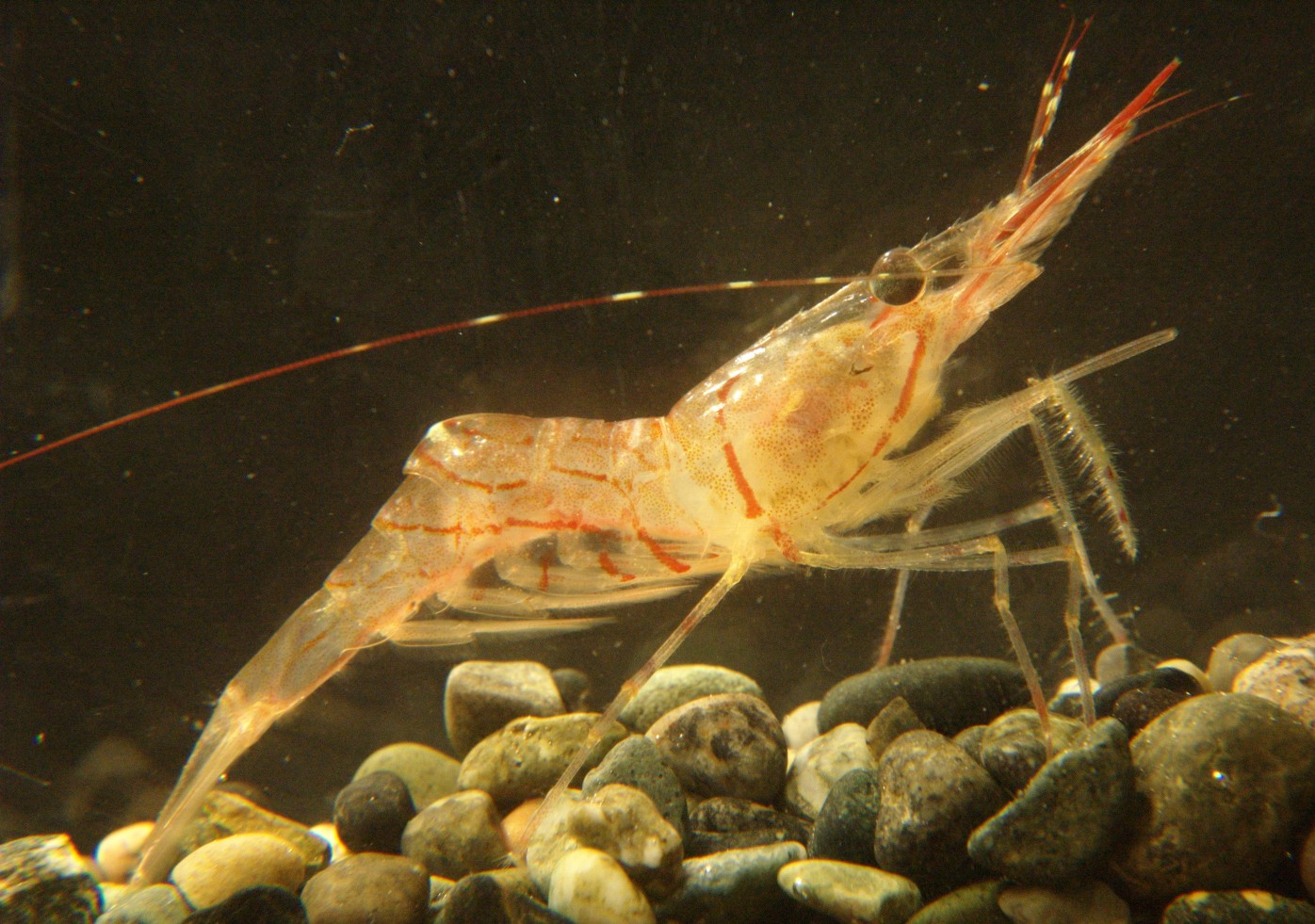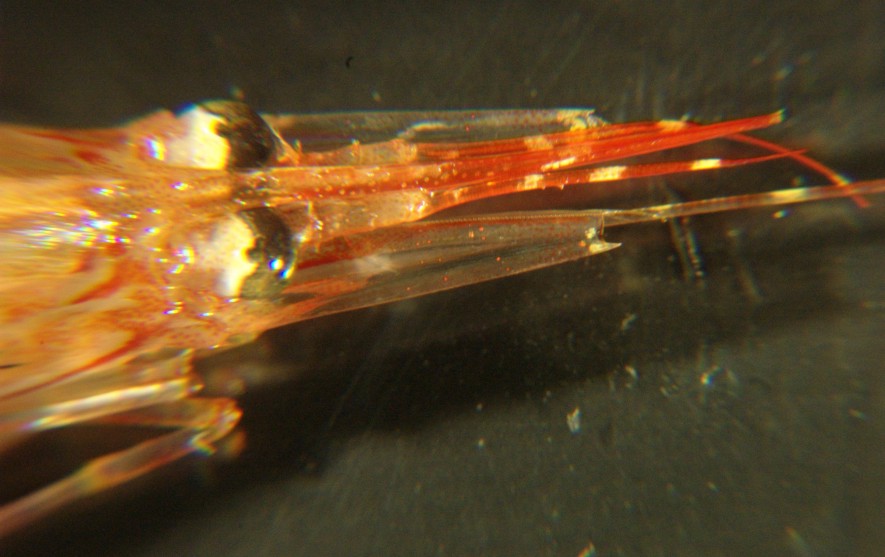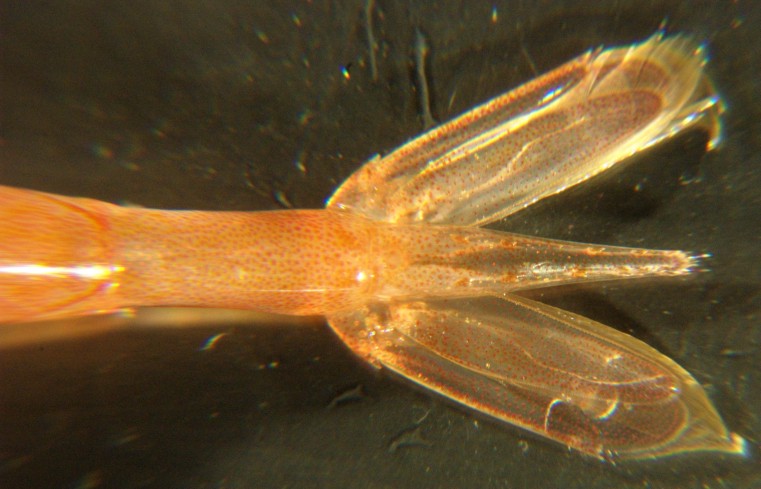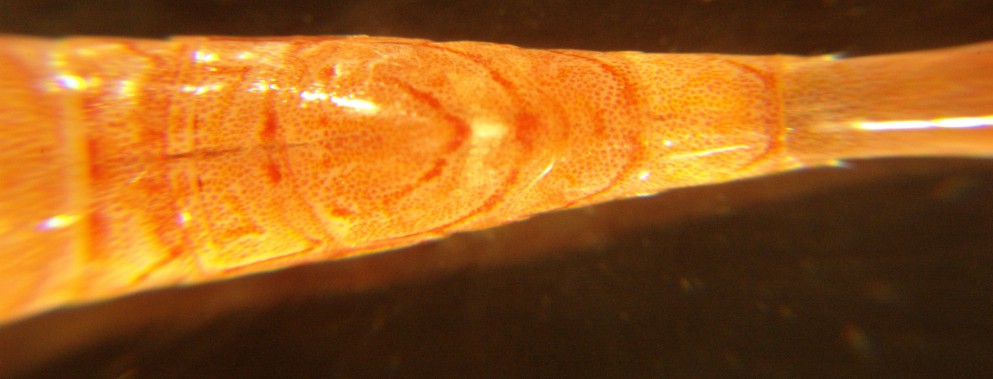Pandalus goniurus Stimpson, 1860Common name(s): Humpy shrimp, flexed pandalid |
|
| Synonyms: Pandalus dapifer |  |
|
Phylum Arthropoda
Subphylum Crustacea
Class Malacostraca
Subclass Eumalacostraca
Superorder Eucarida
Order Decapoda
Suborder Pleocyemata
Superfamily Pandaloidea
|
|
| Pandalus goniurus, nearly 8 cm long from telson tip to rostrum tip. Captured by otter trawl at 75 m depth, San Juan Channel. Note the bend in the abdomen, which is more prominent than in most Pandalid shrimp. | |
| (Photo by: Dave Cowles,m July 2008 ) | |
How to Distinguish from Similar Species: The laterally compressed, "humpy" third abdominal segment with the median dorsal lobe, as well as the distinctive abdominal striping help distinguish this species from other Pandalids. Pandalus danae has diagonal abdominal stripes but they are coarser and angle downward toward the back. Pandalus stenolepus has a humped back and abdominal stripes which angle upwards toward the back like this species does, but it also has large, dark red spots and blue dots.
Geographical Range: Off Japan, Siberia, Alaska (Bering Sea), British Columbia, down to Puget Sound.
Depth Range: Subtidal to 450 m
Habitat: Sandy and muddy bottoms
Biology/Natural History:
This species captures its prey between its legs before feeding on
it.
It is a protandrous hermaphrodite (male first, then female later in
life).
It probably is a male its first year, becomes female the second year
and
lays eggs, then dies. Eggs are seen from late November to
April.
Predators include sand sole.
| Return to: | |||
| Main Page | Alphabetic Index | Systematic Index | Glossary |
References:
Dichotomous Keys:Kozloff, 1987, 1996
General References:
Butler,
1980
Jensen,
1995
Lamb
and Hanby, 2005
Scientific Articles:
Web sites:
General Notes and
Observations: Locations,
abundances, unusual behaviors:
 |
 |
| The rostrum has movable dorsal spines on the proximal half but none on the distal half. The distal half angles upward. | The distal half of the lamella of the antennal scale is at least as wide as the spine, but the spine is longer than the lamella and projects beyond it. There is red on the outer margin of the antennal scale. |
| These two views of the head show characteristics of the rostrum and of the antennal scale. | |

The telson
has 5-7 lateral spines along the dorsal side and a blunt tip.
Notice
that the spots near the base are yellowish. The uropods
are longer than the telson.
Authors and Editors of Page:
Dave Cowles (2008): Created original page
CSS coding for page developed by Jonathan Cowles (2007)

